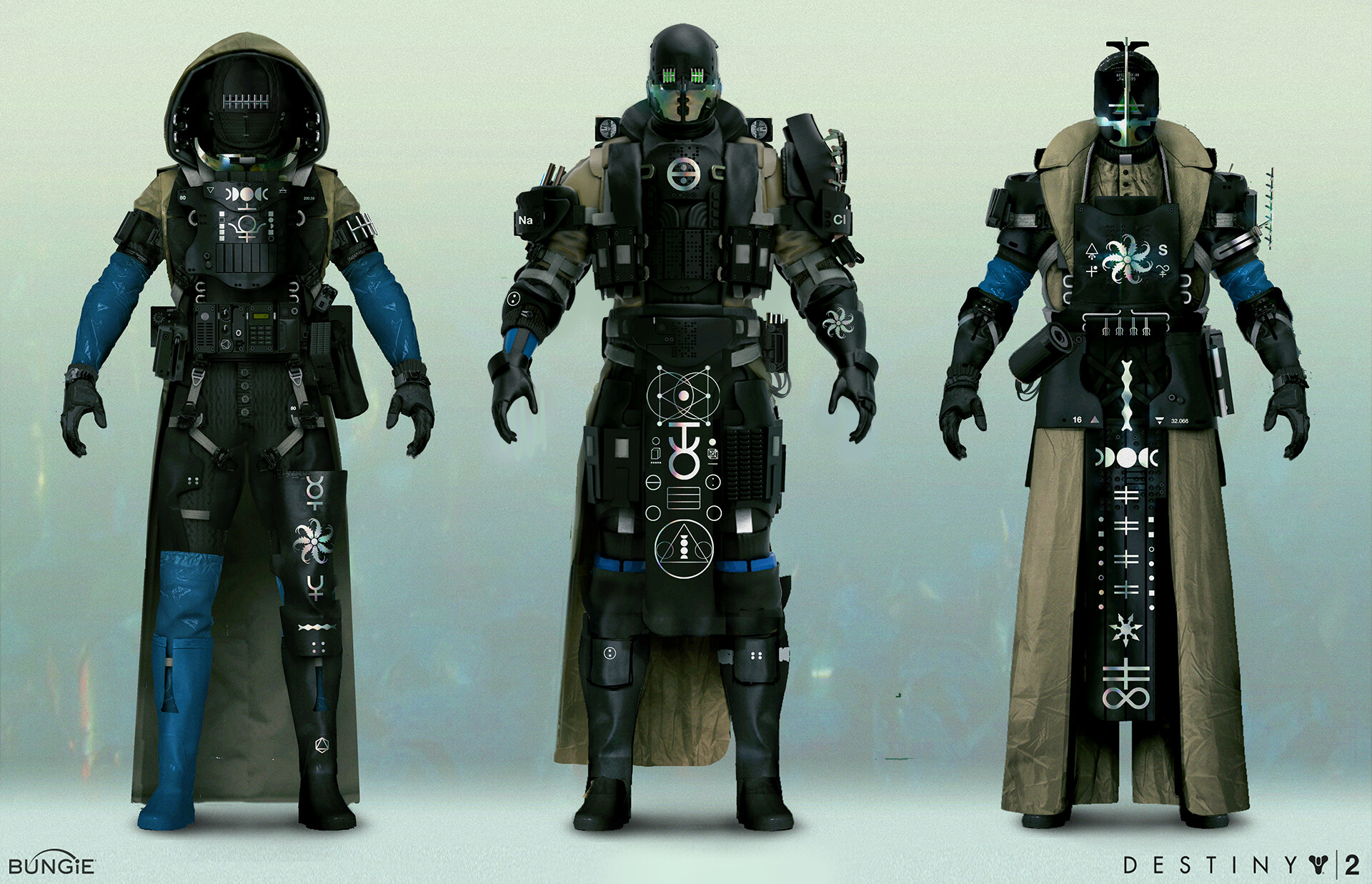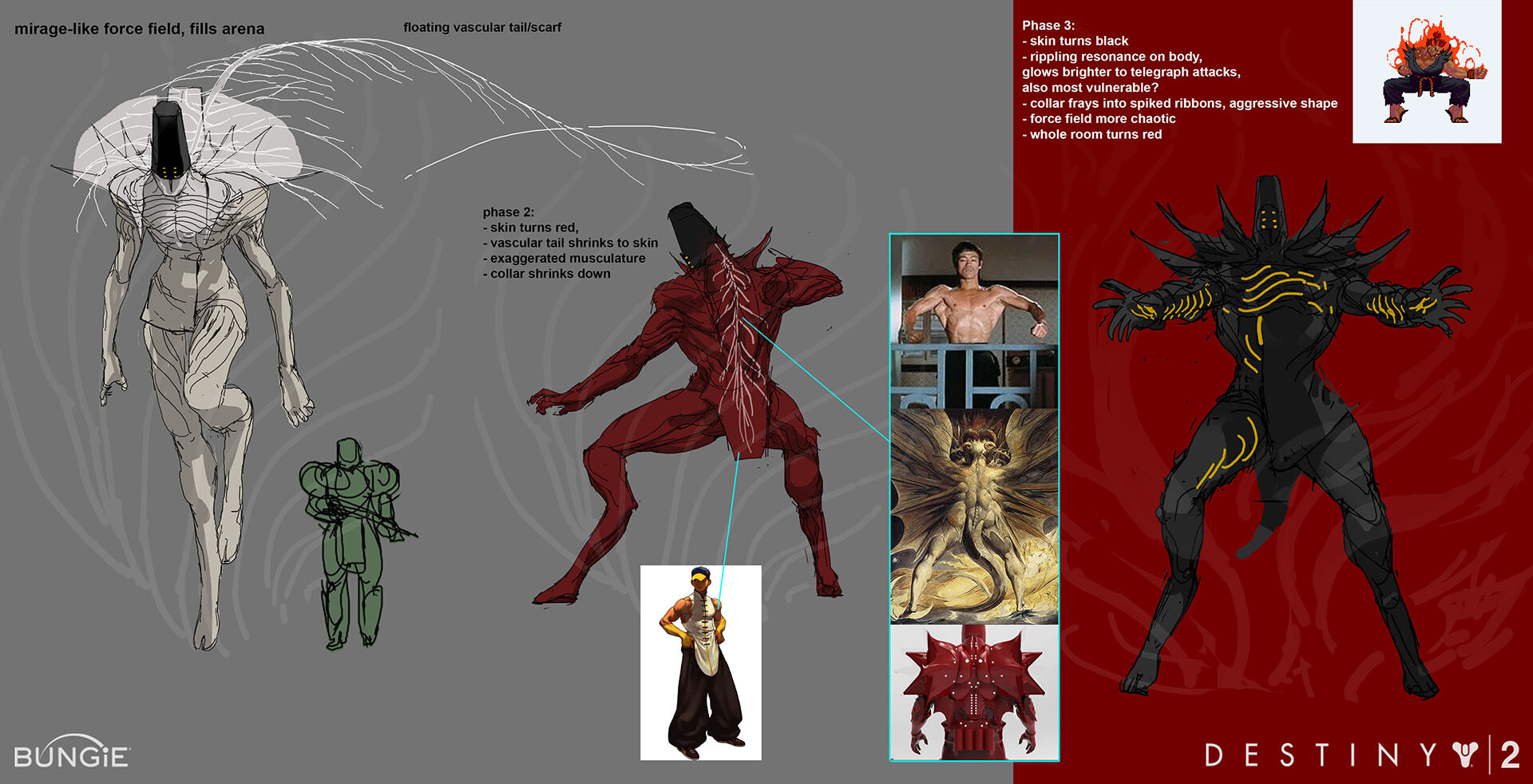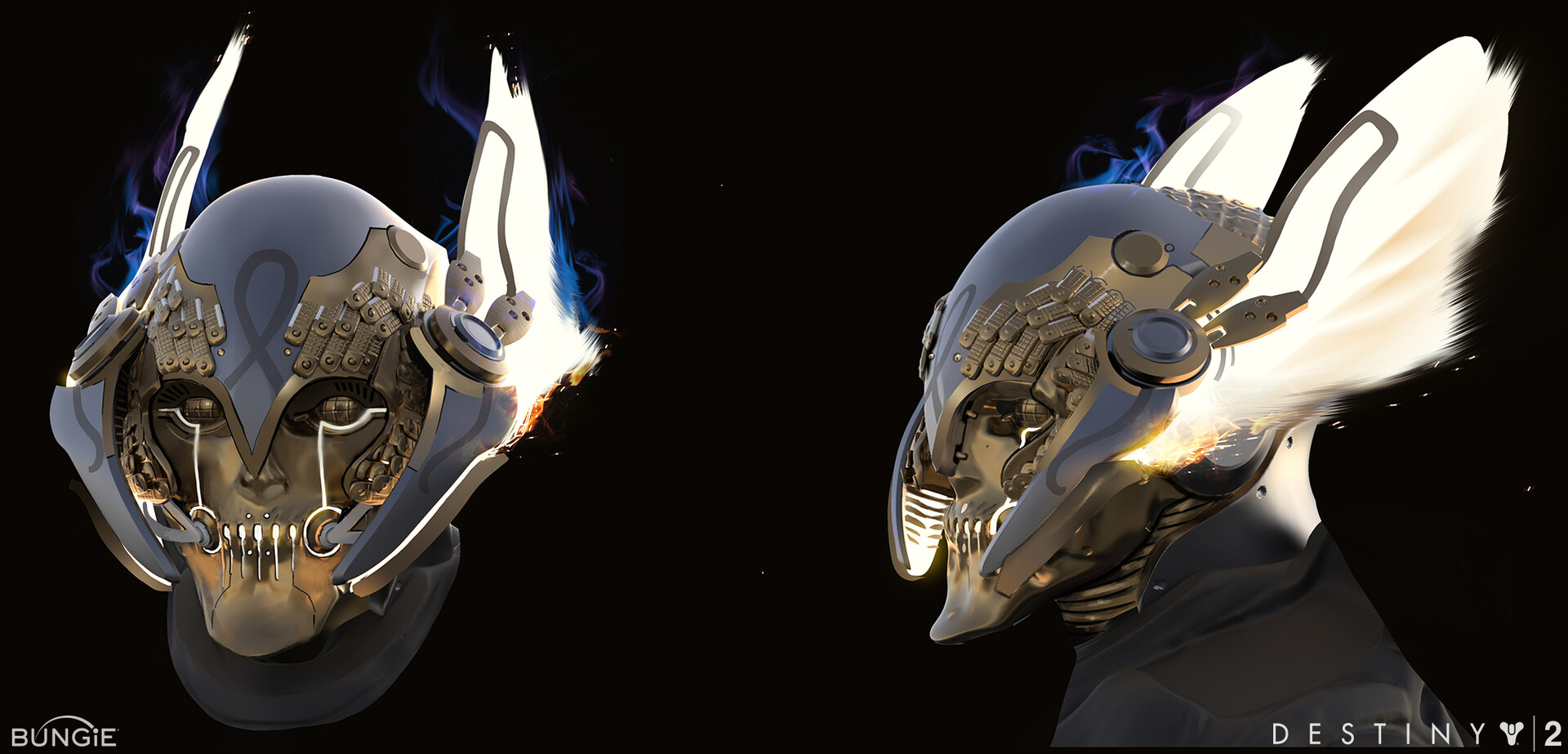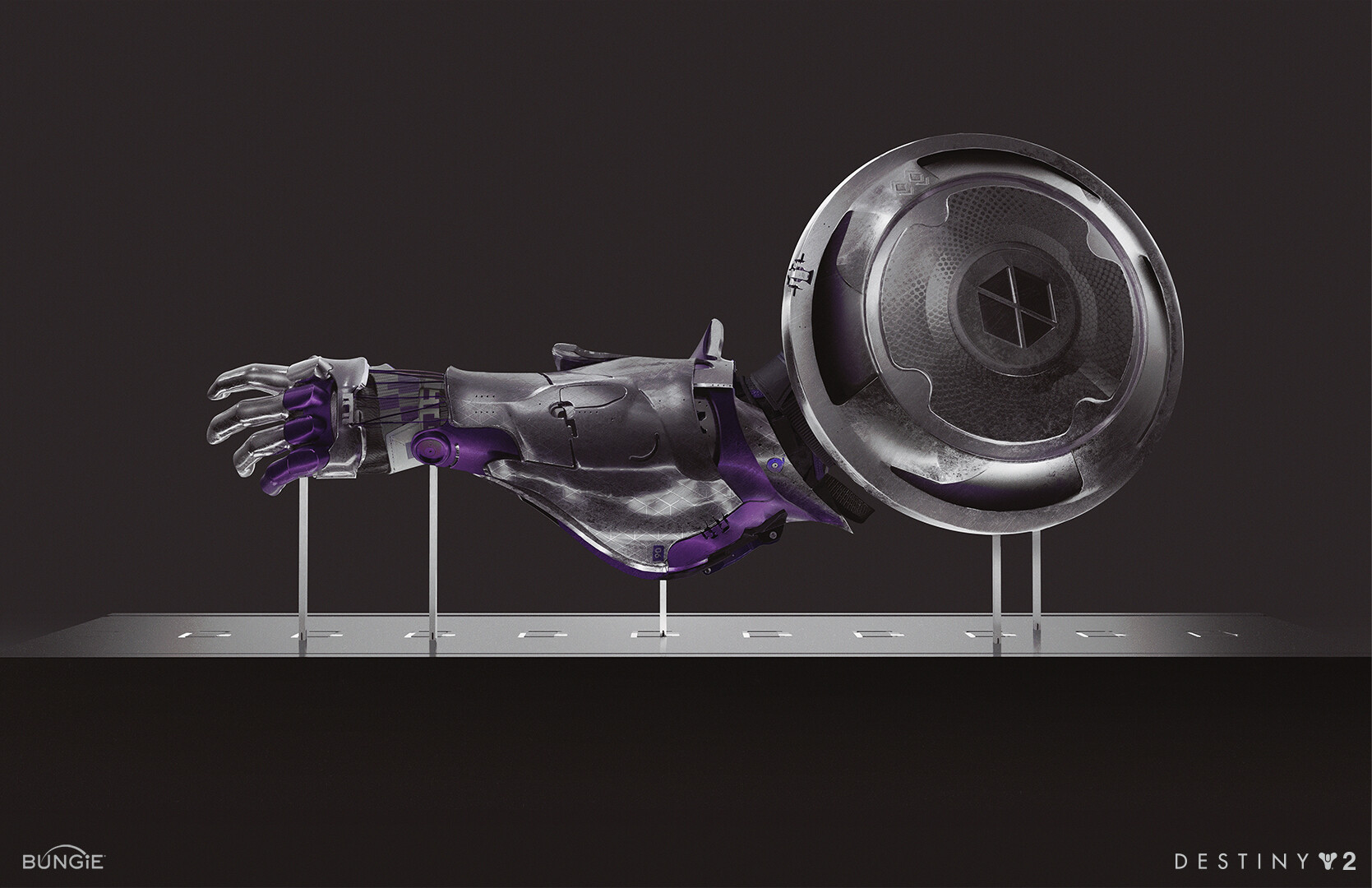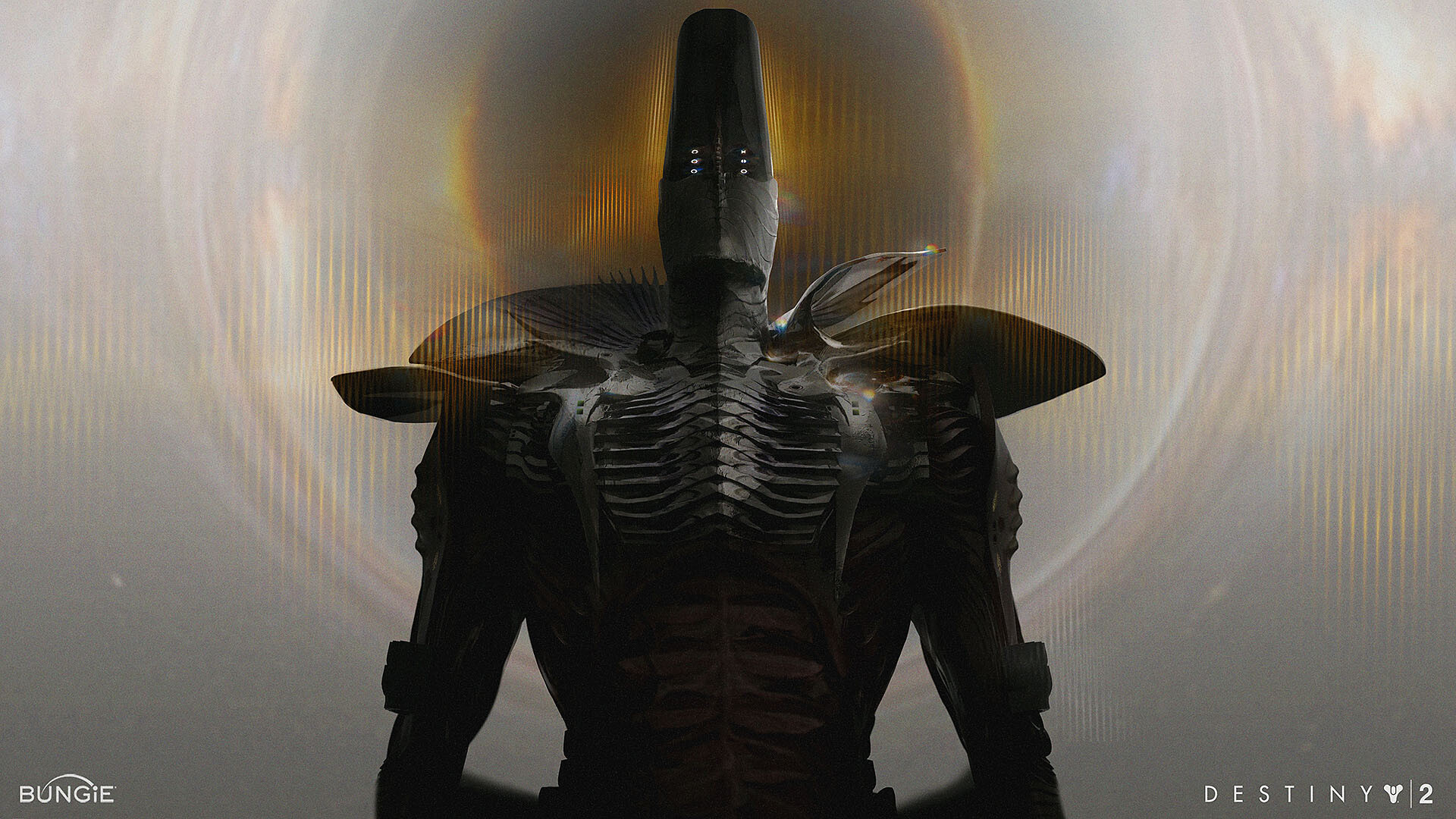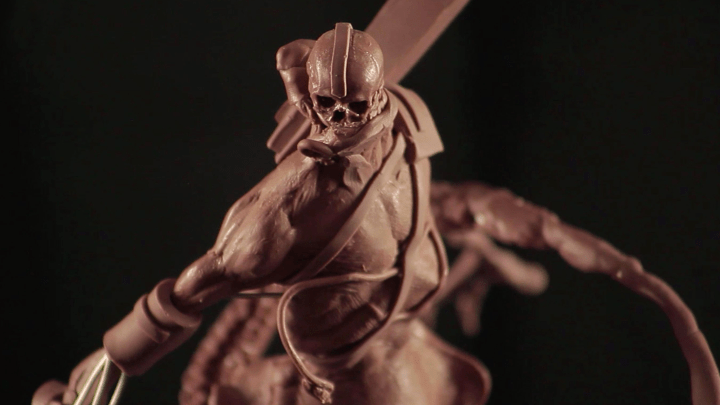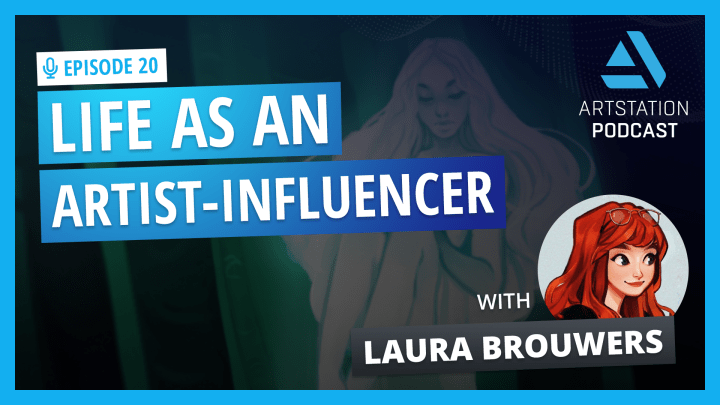A Day on the Destiny 2 Concept Team

Dima Goryainov – Concept Artist – Destiny 2: The Witch Queen
Getting Started
The Destiny universe is an amazing creation with infinite possibilities to explore. Members of the Concept team are some of the first adventurers launched into this universe. We fly in on space probes and search for ideas, connections, and aspire to create visuals that inspire our team members and entertain our players. We look for weird findings and attach them to the narrative of the game’s story.
We hope to share some insight into our process and what we look for in artists we want to collaborate with.
A Day on the Destiny 2 Concept Team
We are on a live-game schedule, which means a constant stream of content creation. Currently the Concept team has seven members plus a producer. We go into each week with a set of tasks; some are new and some are recurring, like weapon and armor concepts. We have several Seasonal releases and a big campaign each year, so we focus our time on providing support and collaboration with the rest of the teams in order to ship each release.
Now the fun part, it all starts with a gathering of information from team members to collaborate on a piece of the game.
For example, when working on a weapon, we start with questions like: Is this a Legendary or an Exotic? Is there a specific gameplay function we want to convey (damage type, weapon type, etc.)? Is this part of a quest? What’s the lore behind this weapon? Oh so many questions.
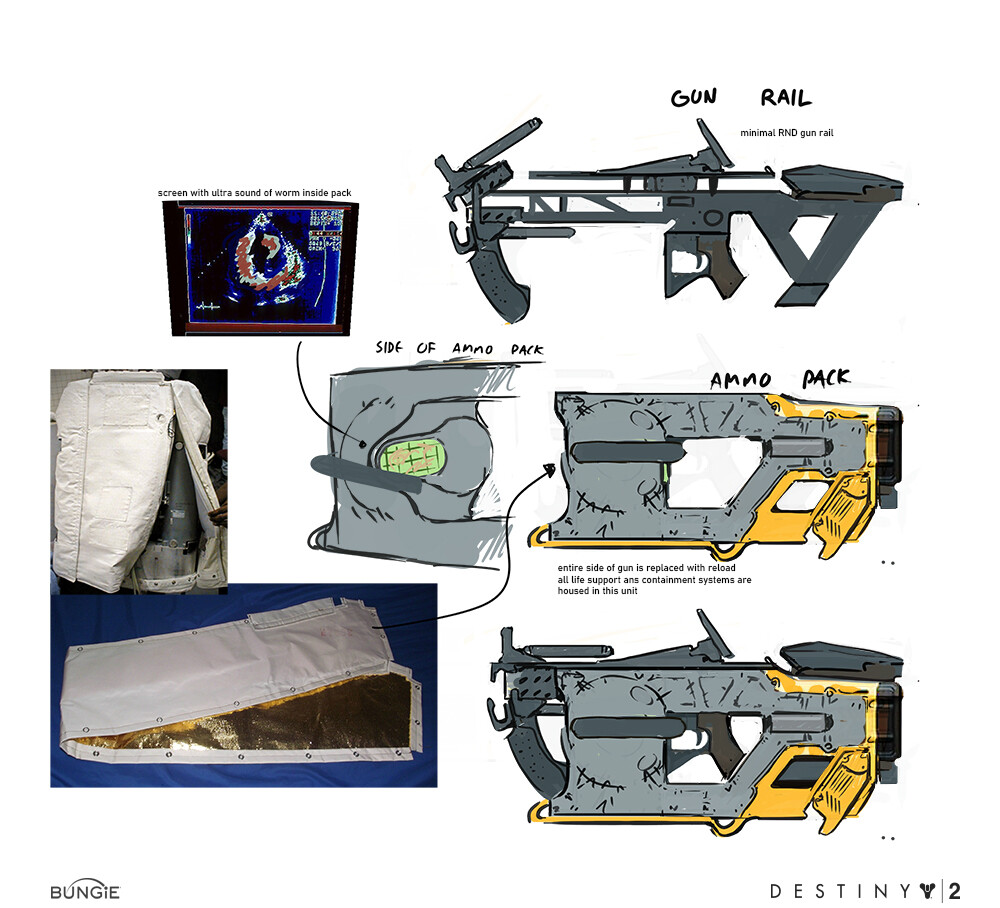
The concept artists start sketching, writing, gathering references, and then combines all this information into a visual design that reflects function and gameplay. We strive to be as novel as we can within the constraints. The individual taste and life experience of each artist comes into play at this point and we like to explain why we made our choices. So, it’s always a treat to hear those stories and see those initial images in our concept chat early in the process.
We all share our feedback and admiration for the concept being shared. We also like to ask questions, and we love going into all sorts of rabbit holes and what-ifs. The energy found in this type of discussion is one of the most fun parts of being on a concept team.
If an artist is in the final stages of a concept, we usually share with the rest of the teams and gather feedback, both technical and visual. Art directors are part of the whole process as well, so we pay close attention to their visual direction.
There are many things that can be said about the day-to-day of a Destiny concept artist but the most important part is the idea or thesis of a design. Everyone has different ways to find their idea or thesis, some find them in group discussions, some during a lunch break, or maybe after a long Pinterest session. After finding the idea, the rest of the work is creating visuals that communicate that idea to others. In the past, we’ve been fortunate to witness great ideas and most importantly travel alongside fellow artists as we journey through the creation and expansion of Destiny.
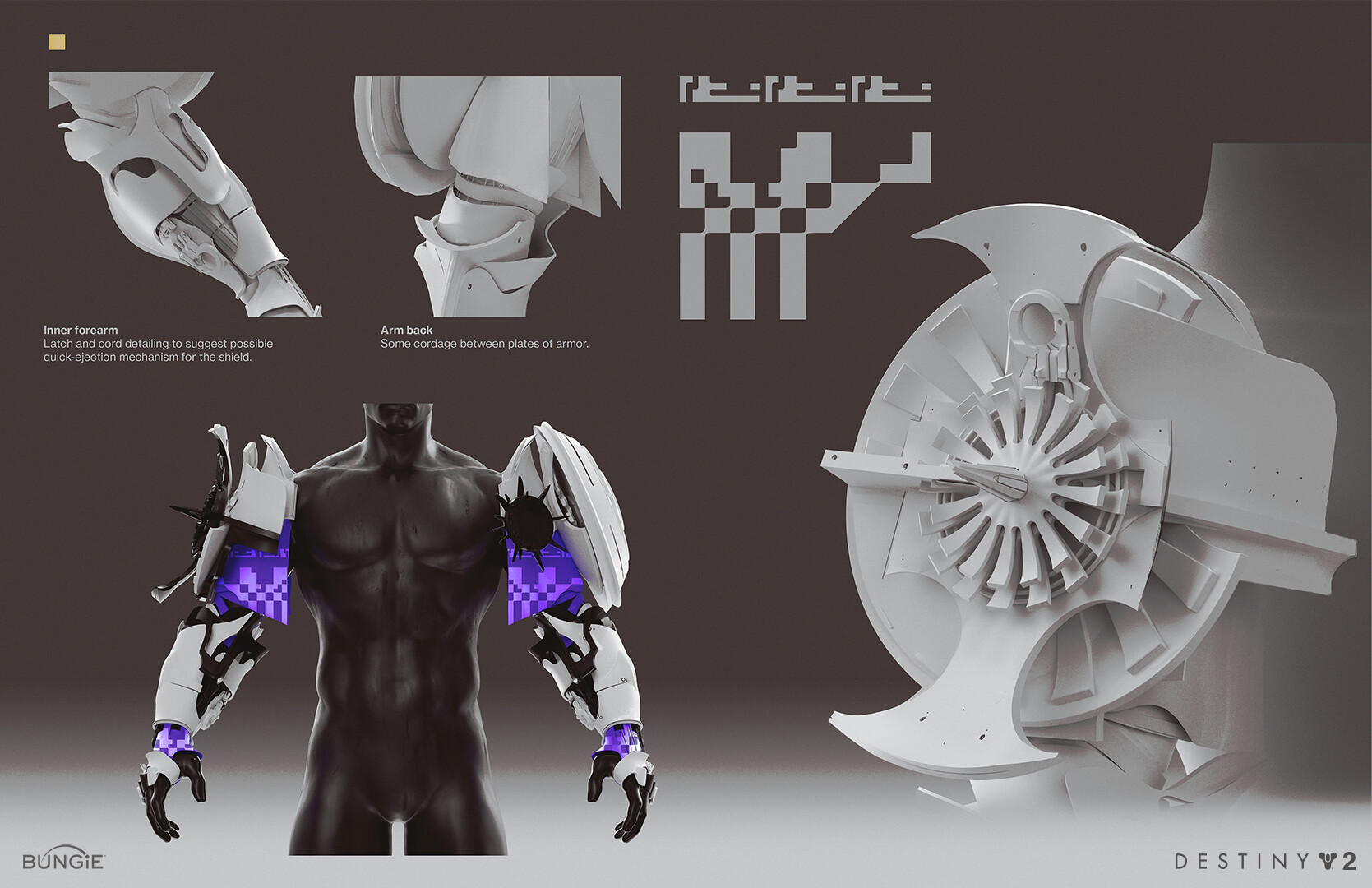
The Style
Destiny’s style could be described as a blend of a couple of things: science fiction and fantasy. The combination of these two unlikely things creates something new and fun. And juxtaposing ideas is definitively a staple of the franchise. In 2022, we have a rich history of Destiny visuals to draw from, so the question is more about expanding them while maintaining a cohesive look.
Narrative and function in a design is also a big part of the Destiny style. We strive for designs that feel like they have history and meaning within the lore.
Does the style come out of any specific art technique? We mostly work with digital tools but everyone on the team has different approaches and use different programs, so there’s no specific brush or trick that makes something fit in the current art direction.

Portfolio
Technique is great. So are volume of examples. But what we look for in a portfolio is how an idea is depicted visually. Showing how you arrived at something is very helpful too. Reference images, sketches, and progress is a great way to show how you work through an idea.
The next thing we look for is consistency. Can you repeat the same level of quality and freshness for multiple ideas and on different subjects like environments, weapons, vehicles, props, characters, graphic design, etc.?
Let’s Talk
If you are around the LightBox Expo, drop us a message! We hope we get a chance to meet you.
Thank you,
Destiny 2 Concept team

